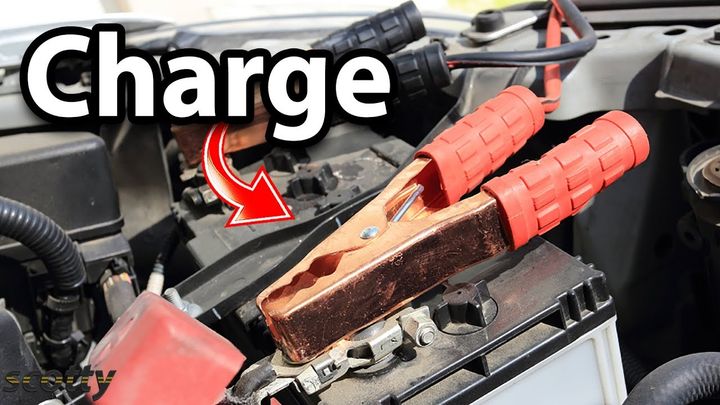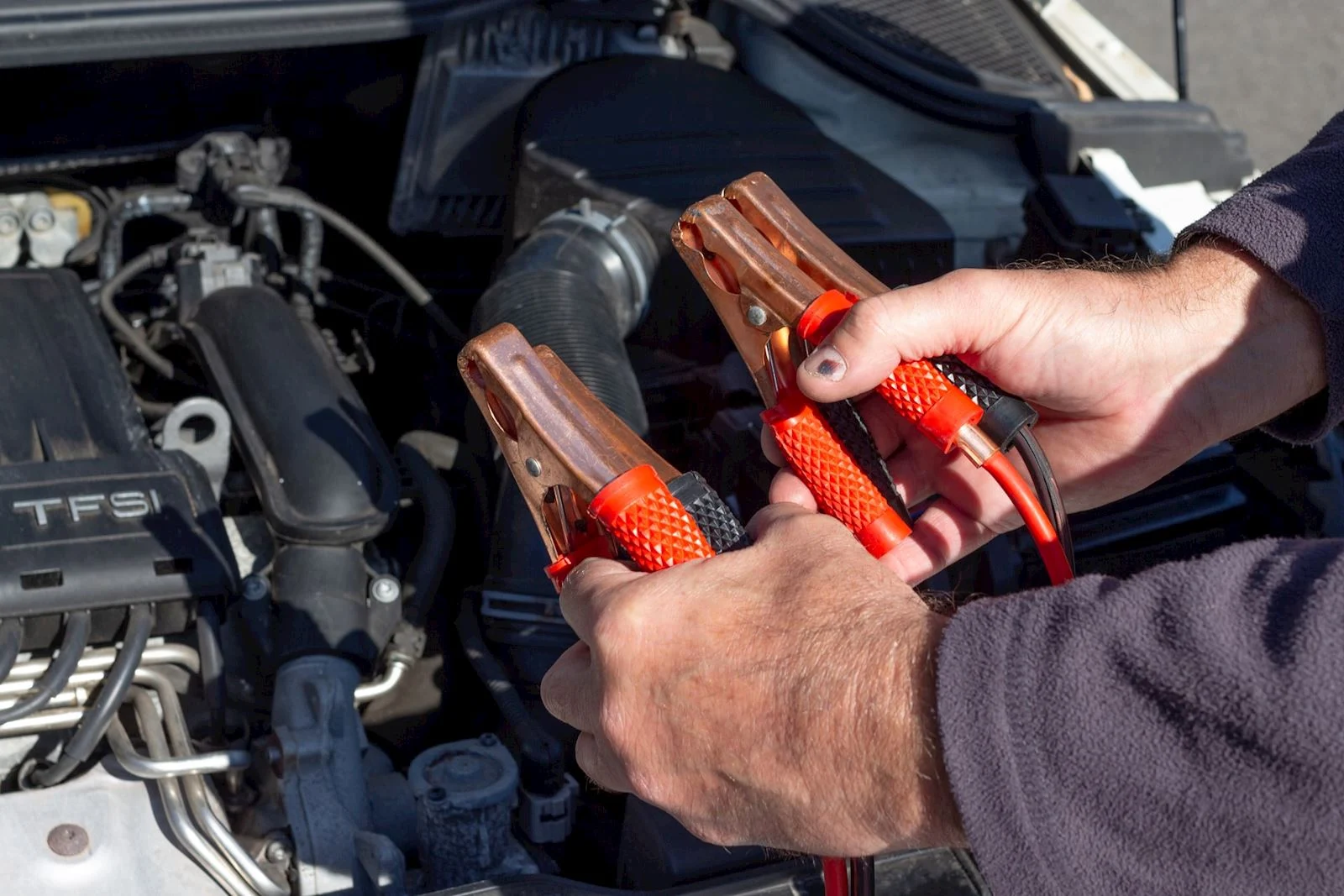


Charging a car battery at home is a simple process that can save you time and money. With the right equipment and safety measures, you can maintain your battery's health and extend its lifespan. This guide will walk you through the steps to charge your car battery properly, helping you avoid costly mistakes and keep your vehicle running smoothly.

A car battery is a crucial component of your vehicle's electrical system. It provides the power to start the engine and run various electrical devices. Regularly charging your battery is essential for optimal performance and longevity. Neglecting a weak or dead battery can lead to premature failure and leave you stranded.
This article will cover the following topics:
Understanding your car battery
Preparing to charge your battery
Selecting and using a battery charger
Monitoring and completing the charging process
Troubleshooting common issues
Maintaining and storing your battery
By mastering these aspects, you'll be equipped to charge your car battery safely and effectively.
Before charging your battery, it's important to grasp its basic characteristics and specifications. Most car batteries are 12-volt lead-acid batteries, composed of six cells that generate 2.1 volts each. The battery's capacity, measured in amp-hours (Ah), indicates the amount of current it can deliver over a specific time.
Lead-acid batteries contain lead plates immersed in an electrolyte solution of sulfuric acid and water. During discharge, the lead plates react with the sulfuric acid, producing electricity. Charging reverses this reaction, converting the lead sulfate back to lead and lead dioxide.
When selecting a battery or charger, consider the following key ratings:
| Rating | Description |
|---|---|
| Cold Cranking Amps (CCA) | The current the battery can deliver at 0°F (-18°C) for 30 seconds without dropping below 7.2 volts. |
| Reserve Capacity (RC) | The minutes the battery can deliver 25 amps at 80°F (27°C) before the voltage drops below 10.5 volts. |
| Group Size | A standardized battery size that ensures proper fit in your vehicle. |
Before charging, gather the necessary tools and protective gear, and inspect your battery for any signs of damage or wear.
Essential items for safe battery charging include:
Compatible battery charger
Safety gloves and eye protection
Wire brush for cleaning terminals
Distilled water (for serviceable batteries)
Voltmeter or multimeter
Perform a visual check of your battery, looking for:
Cracks, leaks, or damage to the battery case
Corrosion on the terminals and connectors
Loose mounting or terminal connections
Clean any corrosion with a wire brush and tighten the connections if needed. For serviceable batteries, check the electrolyte level and top off with distilled water if necessary, being careful not to overfill.
Choosing the right battery charger is crucial for safe and efficient charging. There are two main types of chargers:
Smart chargers: These advanced chargers monitor the battery's condition and adjust the charging process accordingly. They often feature built-in safety measures, such as reverse polarity protection and automatic shutoff, to prevent overcharging and damage.
Traditional chargers: These basic chargers supply a constant voltage and current to the battery without any monitoring or adjustment. They require manual supervision and disconnection to avoid overcharging.
When selecting a charger, ensure it is compatible with your battery's voltage (typically 12V for car batteries) and has an appropriate charging amperage. A slower charge rate (2-4 amps) is generally safer and more efficient, while a higher rate (10-15 amps) can be used for faster charging but demands closer attention.
To connect the charger:
Place the charger on a stable surface, away from the battery and any flammable materials. Identify the positive (red, "+") and negative (black, "-") terminals on your battery and the corresponding clamps on your charger. Connect the positive (red) clamp to the positive battery terminal, followed by the negative (black) clamp to the negative terminal or an unpainted metal part of the engine block.
Configure the charger settings according to your battery type and desired charge rate. Consult your charger's manual for recommended charge times based on battery size and charge rate.
Once the charger is connected and configured, begin the charging process and monitor the battery's progress. Most chargers have indicators, such as LED lights or a digital display, to show the charging status. Ensure the battery doesn't overheat or exhibit signs of damage.
| Battery State of Charge | Voltage (12V Battery) |
|---|---|
| 100% (Fully Charged) | 12.6V - 12.8V |
| 75% | 12.4V - 12.5V |
| 50% | 12.1V - 12.3V |
| 25% | 11.8V - 12.0V |
| 0% (Fully Discharged) | 11.7V or lower |
A fully charged 12V battery should measure between 12.6V and 12.8V when the charger is disconnected. To prevent overcharging, use a smart charger with automatic shutoff or closely supervise the charging process with a traditional charger.
Signs of overcharging include:
Battery becoming hot to the touch
Electrolyte bubbling or boiling
Swollen or deformed battery case
If you notice any of these signs, immediately unplug the charger and let the battery cool before reassessing its condition.
After charging is complete, turn off and unplug the charger. Remove the negative (black) clamp first, then the positive (red) clamp. Replace any battery cell caps and clean up your work area.
To verify that your battery is fully charged and holding a charge:
Use a voltmeter or multimeter to measure the battery's voltage. A fully charged 12V battery should read around 12.6V to 12.8V. Start your vehicle and let it run for a few minutes. If it starts easily and runs smoothly, your battery is likely in good condition. If the battery voltage drops significantly after running the vehicle or if it struggles to start, there may be an underlying issue with the battery or charging system that requires further investigation.
Despite following proper charging procedures, you may encounter problems during the charging process. Some common issues and their solutions include:
Battery not holding a charge: This may indicate a damaged or sulfated battery that needs replacement, or a malfunctioning alternator or parasitic drain on the battery. Charger not turning on: Check that the charger is properly plugged in and the outlet is working. Inspect the charger cables for damage and ensure the clamps are securely connected to the battery terminals. Battery overheating: If the battery becomes hot during charging, disconnect the charger immediately and allow the battery to cool. This may signify a damaged battery or incorrect charger setting.
If you can't resolve the issue or suspect a more serious problem, consult a professional mechanic or battery specialist for assistance.
Proper maintenance and storage can help extend your battery's lifespan and ensure optimal performance.
Battery maintenance tips:
Keep the battery clean and dry, and regularly inspect it for signs of corrosion or damage.
For serviceable batteries, check the electrolyte level monthly and top off with distilled water as needed.
Ensure the battery terminals and connections are tight and free of corrosion.
Avoid exposing the battery to extreme temperatures, which can reduce its capacity and lifespan.
Battery storage tips:
Charge the battery fully before storage to prevent sulfation.
Store the battery in a cool, dry place away from direct sunlight and heat sources.
For long-term storage, use a battery maintainer or trickle charger to keep the battery topped off and prevent self-discharge.
| Battery Charger Type | Pros | Cons |
|---|---|---|
| Smart Charger | Automatic monitoring and adjustment, Built-in safety features, Suitable for long-term maintenance | Higher cost, May not be compatible with all battery types |
| Traditional Charger | Lower cost, Simple to use | Requires manual monitoring, Risk of overcharging and damage, Limited safety features |
Charging a car battery safely and effectively involves understanding your battery's requirements, using the proper equipment, and paying attention to detail. By following the steps in this guide and adhering to safety precautions, you can maintain your battery's health and prolong its lifespan. Regular battery maintenance, including cleaning and inspection, will help prevent issues and ensure your vehicle is always ready to go.
Remember to select a compatible charger, configure the settings correctly, and monitor the charging process closely to avoid overcharging or damaging the battery. If you encounter any problems or suspect a more serious issue, don't hesitate to seek the help of a professional mechanic or battery specialist.
By taking a proactive approach to battery maintenance and charging, you can save time, money, and the inconvenience of a dead battery when you least expect it. With the knowledge and skills outlined in this guide, you'll be well-equipped to keep your car battery in top condition for years to come.
A fully charged 12V car battery should measure between 12.6 and 12.8 volts when the engine is off. You can check this using a voltmeter.
Yes, in most cases it is safe to charge a car battery while it is still connected to the vehicle. However, make sure the area is well-ventilated as charging can produce explosive gases.
Signs your battery may need replacing include slow engine cranking, swelling or bloating of the battery case, and the battery being more than 3-4 years old. If in doubt, have the battery load tested by a professional.
No, you should use a charger specifically designed for charging 12V lead-acid automotive batteries. Make sure to select the appropriate charging amperage and voltage settings.
Regularly clean any corrosion from the battery terminals and ensure the connections are tight. If you have a serviceable battery, check the electrolyte level monthly and top off with distilled water if needed.
Always wear protective gloves and eyewear when working with car batteries to protect against potential acid leaks or splashes. Avoid wearing metal jewelry that could cause a short circuit.
While charging times vary, avoid leaving your battery on the charger for more than 24 hours as this risks overcharging and damaging the battery. Use a smart charger with automatic shut-off if possible.
Yes, even a battery that seems completely dead can often be recharged. However, it may take a very long time (24+ hours) and there is a risk the battery has suffered permanent damage and may need replacement.
A slight warming of the battery during charging is normal. However, if the battery becomes hot to the touch, is hissing or bubbling, or starts to swell, stop charging immediately as this indicates a problem.
For most vehicles used regularly, the alternator keeps the battery sufficiently charged and additional charging is not needed. Vehicles driven infrequently or on many short trips may benefit from periodic charging every few months.

Miguel started tinkering with car radios as a teenager, fascinated by the intricate dance of wires and circuits. This passion led him to pursue a career as an automotive electrician. For the past 10 years, Miguel has tackled everything from flickering headlights to mysterious electrical gremlins. He thrives on troubleshooting electrical problems and enjoys sharing his knowledge to empower car owners to understand their vehicles better.






